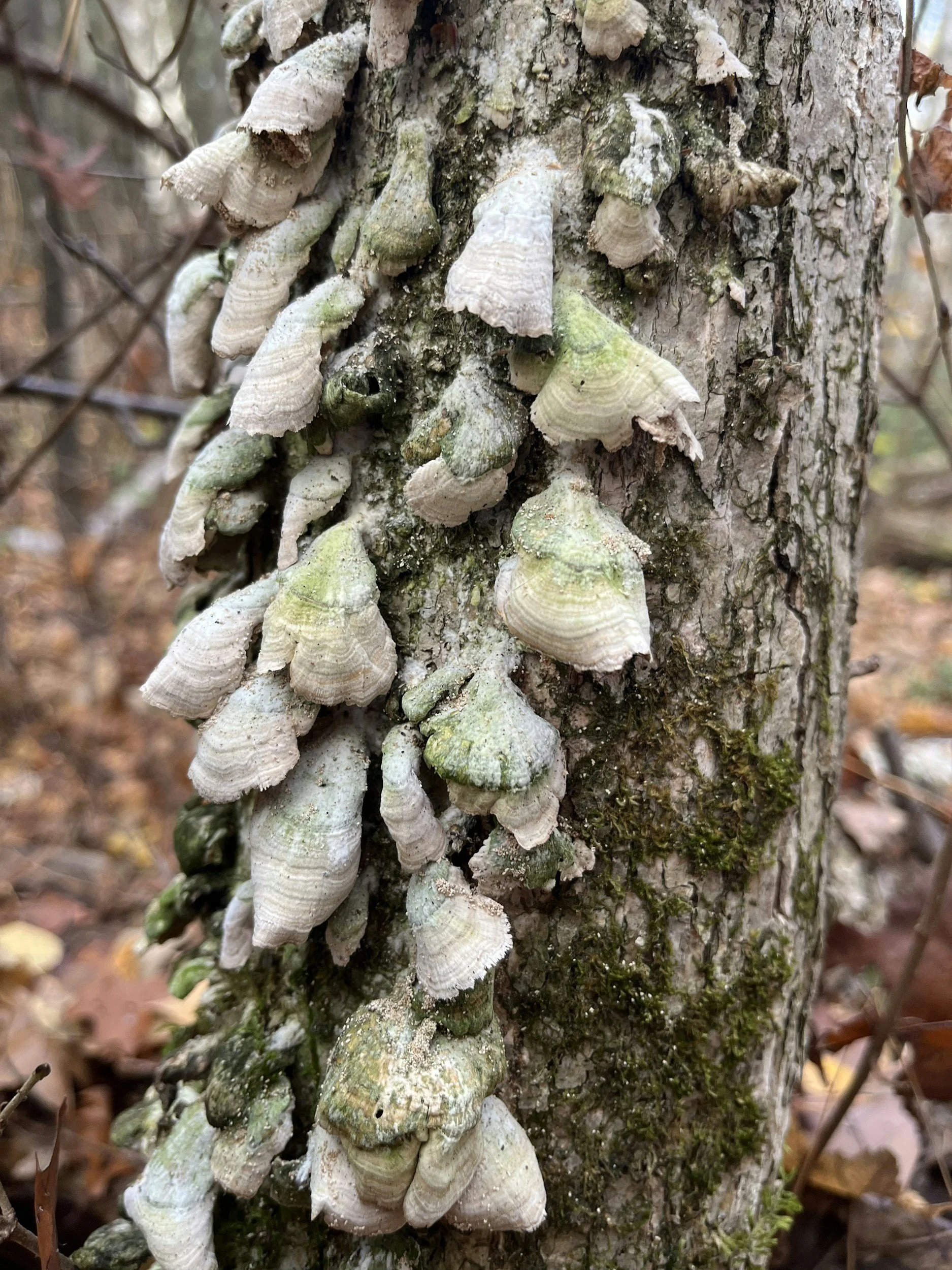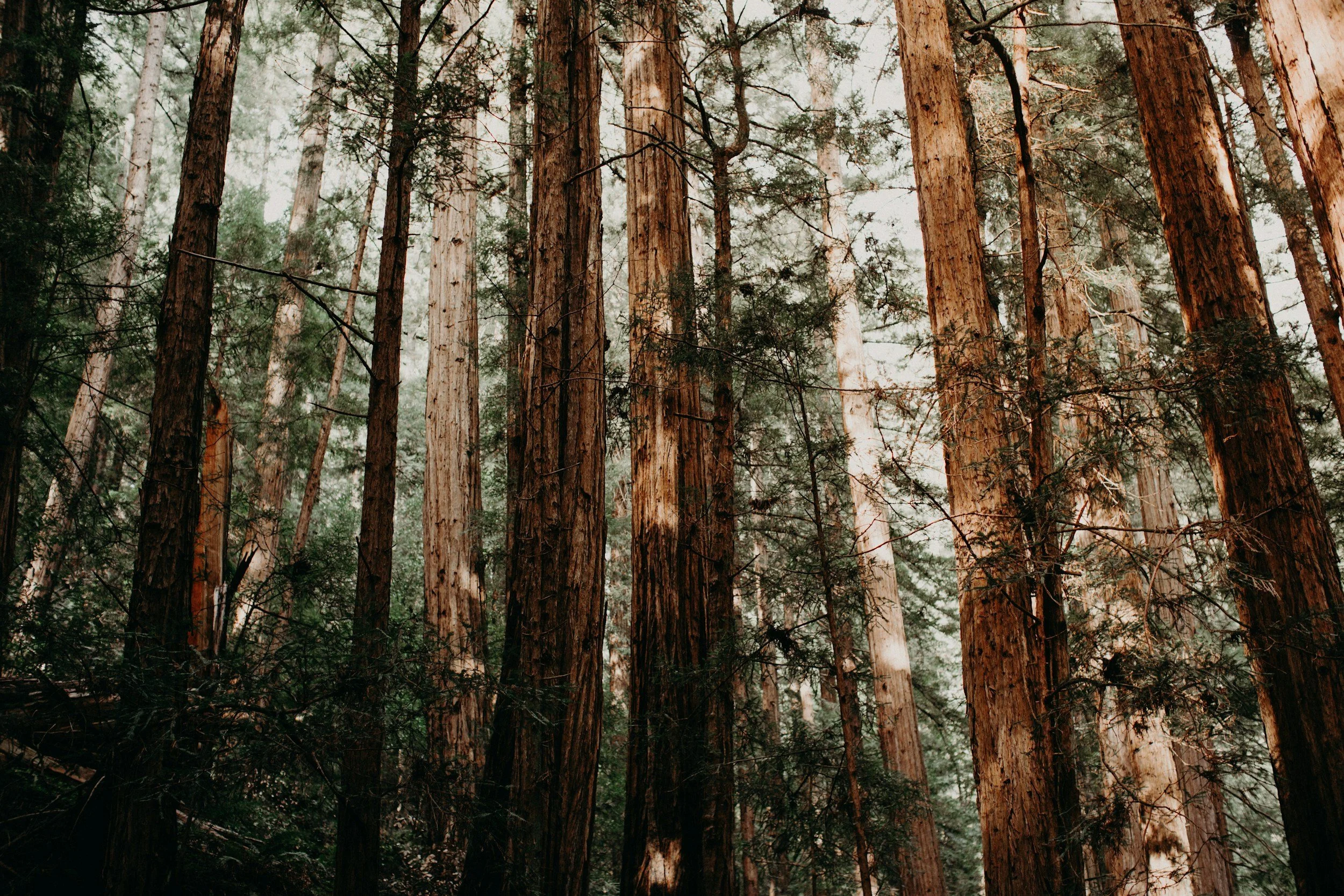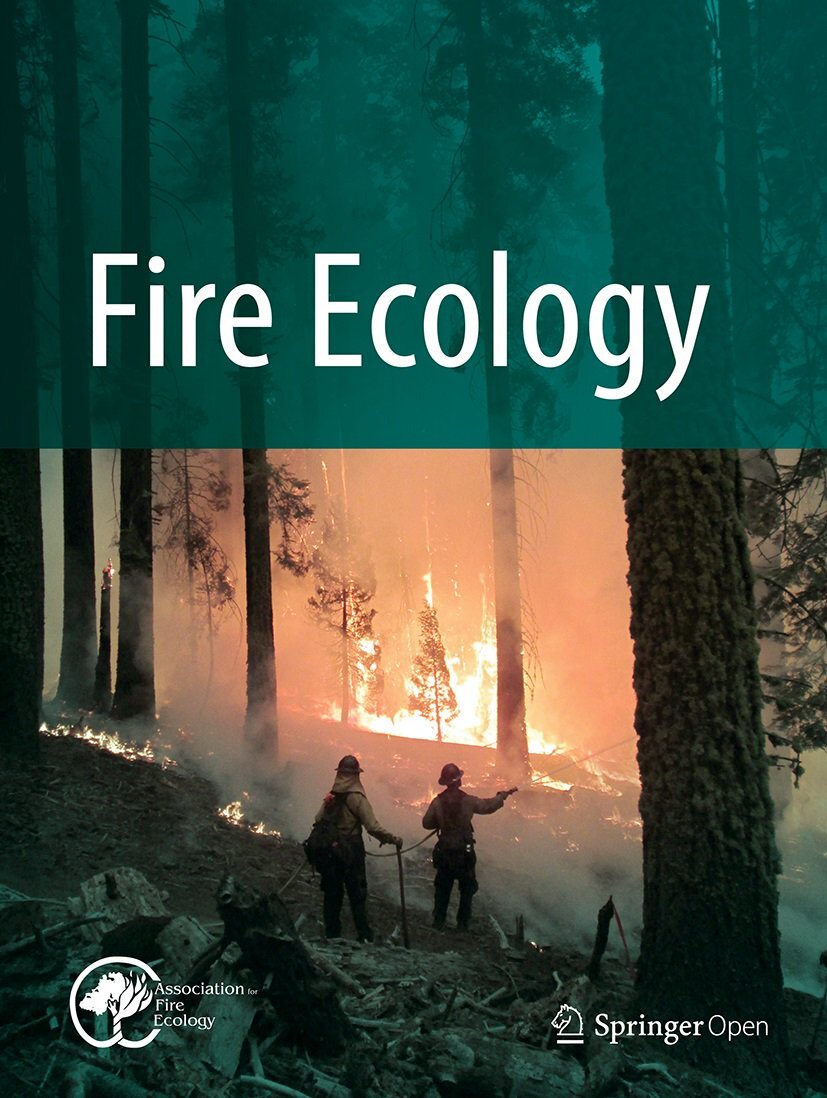FIRE ECOLOGY CHATS
A PODCAST FEATURING RESEARCH AND SCIENCE PUBLISHED IN THE JOURNAL FIRE ECOLOGY
Streaming on Spotify, YouTube, and Apple Podcasts
Cole Buettner, Tyler Aldworth, and Michelle Greiner discuss investigating the use of the Incident Strategic Alignment Process (ISAP) and the value this process brings to managers.
Indra Boving, Joe Celebrezze, and Leander Anderegg discuss how plant hydration impacts tissue level flammability.
María Salgado Salomón discusses what happens when fire occurs in a Nothofagus forest specifically considering the ectomycorrhizal fungi, with Spanish acknowledgments.
George Jensen, Benjamin Knapp, and Jeffery Cannon discuss how understanding structural complexity enhances understanding of the ecology and restoration of fire-maintained ecosystems.
Shu Li and Robert York discuss this systematic, long-term analysis of escaped prescribed burns in California.
Tucker Furniss and Zhuoran Duan discuss using LANDIS-II to simulate the interactive effects of future climate and land management thinning, prescribed burning, and wildfire regimes.
Nathan Stephenson and David Soderberg discuss new evidence that addresses if large patches of fire severe enough to kill most sequoias is a normal part of the sequoia fire regime.
Sky Biblin to discusses this rare opportunity to compare early post-wildfire data between areas with and without previous application of prescribed burning.
Mike Clarke discusses a re-evaluation of the ecological metrics that guide fire management.
Clint Carney discusses examining the complications of federal agency response in the aftermath of Colorado’s 2020 wildfires.
Madeleine Lopez, Jeffrey Kane, and David Greene discuss how non-serotinous conifers persist on the landscape following high-severity fire.
Caden Chamberlin and Marc Meyer discuss evaluating the capacity of contemporary wildfires for restoring forest structural patterns.
Dana Johnson and Thea Whitman discuss how wildfires influence boreal forest soil carbon cycling.
Andrew Barton and Dan Grenier discuss the role fire has played in pitch pine forests over the last 9,000 years, and why we find this kind of woodland in coastal Maine.
Iván Barberá discusses fire patterns and drivers over the last 24 years in northwestern Patagonia, with Spanish translations!
Paola Arroyo-Vargas and Andrés Holz discuss how forest structures in Chile regenerate after short-interval severe fire, with Spanish translations!
Mark Turner discusses how fire at different times of the season influences the types of oak that regenerate.
Gina Beebe and Lauren Pile Knapp discuss using herbivory as a supplement to prescribed fire in areas with limitations.
Chika Tada, Ella Plumanns-Pouton, and Alexander Filkov discuss this unique experimental model that tests the fire component of plant species.
Lauren Pile Knapp discusses how we can reopen closed forests in the eastern United States to woodlands and savannas, and reintroduce fire to those landscapes.
Carolyn Stephen, Jamie Ladner, and Lauren Sullivan discuss the effects of prescribed fire on plant communities like dry woodlands, dry-mesic woodlands, and glades in Missouri, USA.
Charlotte Reemts discusses how oak-juniper woodlands respond to crown fires in Fort Cavazos, and how that affects species like the endangered golden-cheeked warbler.
Erica Smithwick discusses how managers in the mid-Atlantic region of the United States can safely put prescribed fire back into the landscape to address local issues.
Clare Boerigter, Sean Parks, and Jonathan Long discuss using intentional, human-ignited fire as a tool to restore natural conditions within wilderness.
Heather Alexander and Jeffrey Cannon discuss reintroducing fire into mixed longleaf pine-hardwood woodlands, and how that will be affected by the shade-tolerant, fire-sensitive species that have grown during periods of fire exclusion.
Doug Aubrey and Jeffrey Cannon discuss how to better predict the leaf litter component in a pine forest to better understand how fire might move through forests under different management scenarios.
Norma Fowler and Rebecca Carden discuss re-introducing surface fires into the woodlands, savannas, and shrubland of Central Texas.
Christine Eriksen discusses how to strengthen our collective capacity to coexist with wildfire.
Malcolm North and Paul Hessburg discuss using strategic fire zones to minimize wildfire risk in the Western U.S.
Maggie Epstein discusses how climate change is influencing forest cover following wildfire in the Northern Rocky Mountains.
Abigail Croker discusses the process of conducting this important research on changing fire regimes in East and Southern Africa’s savanna-protected areas, focusing on indigenous-led savanna burning emissions abatement schemes.
Matt Reilly discusses using remote sensing to detect delayed mortality through spectral decline in trees in California, Oregon, and Washington over a five-year period following a fire.
Neil Williams and Melissa Lucash discuss how fire and climate change influence the boreal forests of Siberia by examining simulations.
Ashley Coble, Brooke Penaluna, and Laura Six discuss fire severity influences on large wood and stream ecosystems in western Oregon watersheds, with host Bob Keane.
Brett Lawrence discusses the use and impact of UAS aerial ignition during prescribed fire operations over multiple years.
Scott Stephens, Alexis Bernal, and Les Hall share results of a study that used multiple lines of evidence to reconstruct Indigenous fire use in a mixed conifer forest in the northern Sierra Nevada.
Kathleen Uyttewaal about results of a study that analyzed local social contexts in rural areas of Spain, Italy and France and assessed how these may inform adaptive capacity to wildland fire.
Hear from Francis Kilkenny and Jeff Ott, USDA Forest Service, Rocky Mountain Research Station, about a systematic literature review of fuel treatment studies and effectiveness at landscape scales.
Laurie Yung shares results from a study that examined how the wildfire problem is framed, how those frames influence potential solutions, and how reframing can reveal a broader set of solutions.
Shawn McKinney discusses the main findings from a literature review of studies that tested the influence of landscape-level fuel treatments on subsequent wildfires in North America over the past 30 years.
Benjamin Bright discusses using airborne lidar data to predict and map canopy and surface fuels across large landscapes.
Matt Thompson and Kit O’Connor summarize the growing use of PODs (potential operational delineations) and discuss future opportunities for PODs in cross-boundary and collaborative land and fire management planning.
Tegan Brown shares results from research conducted in Lubrecht Experimental Forest in Montana, USA that explored the drivers of seasonal fluctuations in live fuel moisture content.
Joseph Marschall and Daniel Dey discuss their work in a study that resulted in the longest fire-scar record in eastern North America.
Co-authors Quresh Latif, Victoria Saab, and Jonathan Dudley share results of a nine year study that assessed avian relationships with prescribed fire and wildfire.
Kate Wilkin shares results from a study exploring how pyrodiversity relates to plant diversity in Sierra Nevada mixed conifer forests.
Claire Rapp and Matt Jolly share the results of an experiment assessing the role of short-term weather forecasts in fire managers’ decision-making.
Yana Valachovic and Eric Knapp discuss results from their 2021 article in Fire Ecology, “Housing arrangement and vegetation factors associated with single-family home survival in the 2018 Camp Fire, California.”
Megan Friggens and Rachel Loehman share results reported in their 2021 article, “Predicting wildfire impacts on the prehistoric archaeological record of the Jemez Mountains, New Mexico, USA.”
Cara Applestein and Matt Germino share results reported in their recent article, “Detecting shrub recovery in sagebrush steppe: comparing Landsat-derived maps with field data on historical wildfires.”
David Mason and Marcus Lashley discuss their recent article focused on the spatial scale of fire and its influence on conservation outcomes.
In this episode, Cristina Fernández, discusses the applicability of remote sensing to determining changes in soil properties after wildfire.
In this episode, Courtney Schultz (Colorado State University) and Matthew Thompson (US Forest Service) discuss US Forest Service fire management and why changes have been elusive.
Learn about a recent evaluation of the accuracy of post-fire tree mortality models from Alina Cansler at the University of Washington.
In this episode, Camille Stevens-Rumann discusses the findings of a scientific literature review on post-fire tree regeneration in the western US.
This episode features Melanie Colavito, Collin Haffey, and Cari Kimball discussing the Fires of Change collaborative art exhibit, which was designed to communicate about shifting fire regimes in the Southwest.
Marc Castellnou and Marta Miralles discuss a methodology for strategic decision-making for wildland firefighters, managers, and responders.
Monique Wynecoop discusses her research focused on integrating traditional knowledge into fuels treatments to improve adaptive management strategies.
Sarah Flanary discusses research findings on whitebark pine encroachment into sagebrush grasslands in Montana.
Jessica Halofsky and David Peterson discuss the key points of their paper that synthesizes understanding of the potential effects of changing climate and fire regimes on Pacific Northwest forests.
In this inaugural podcast episode, Morgan Varner discusses the key take away messages presented in the forum article “Prescribed fire science: the case for a refined research agenda.”

































































